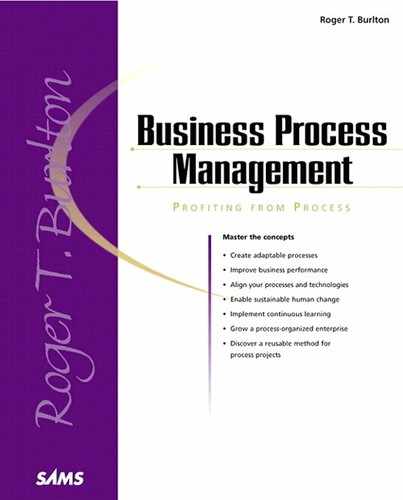Classifying Stakeholder Types
The third step in the Business Context phase provides the basis for the rest of this phase and for the decision-making that will follow in later phases. In this step, an organization defines the categories or types of groups and individuals with which the “Organization-in-Focus” must interact successfully now and in the future to conduct its mission and reach its vision. This step will provide the framework to discover, analyze, and organize the criteria by which options can be evaluated. It defines “who cares.”
Figure 10.5 shows an example of the knowledge produced as a result of classifying stakeholder types.
Techniques
The stakeholder classification techniques can often appear to be somewhat mysterious. Sometimes stakeholder classification seems like an art. The methods used for market analysis can be helpful, such as stakeholder analysis and customer/consumer segmentation.
Lessons Learned
Gather any existing documents and information from various departments that relate to the interactions that the “Organization-in-Focus” has and should have with those parties outside its direct control. Start with Marketing and Sales, with regard to customer segmentation, and then move to the supplier side and do the same for other outside interactions.
This exercise can be difficult because you can segment customers and consumers and other interested parties many different ways. Be cautious about having too many segments or types; otherwise, further analysis can become unwieldy. Think about segmentation along the lines of how the different segments will receive treatment: A different type should require significantly different activity within the “Organization-in-Focus.” It’s also a good idea to move from macro segmentation to micro segmentation. For example, four different customer segments might be subtypes of All Customers.
Stakeholder classification is as much art as science. It requires workshops to be run with a wide range of internal groups represented. It should be conducted top-down (that is, hierarchically) to ensure that all stakeholders are covered. Stakeholder classification should decompose to the point of meaningful difference in the way we interact or plan to interact with the groups. Significantly different interactions require further segmentation.
Start by looking at the generic macro types All Customers, All Suppliers, All Community Stakeholders, All Owners, All Human Resources, and so on. You can decompose these into more specific types. Later analysis can then be conducted at the level of detail chosen at that point.

